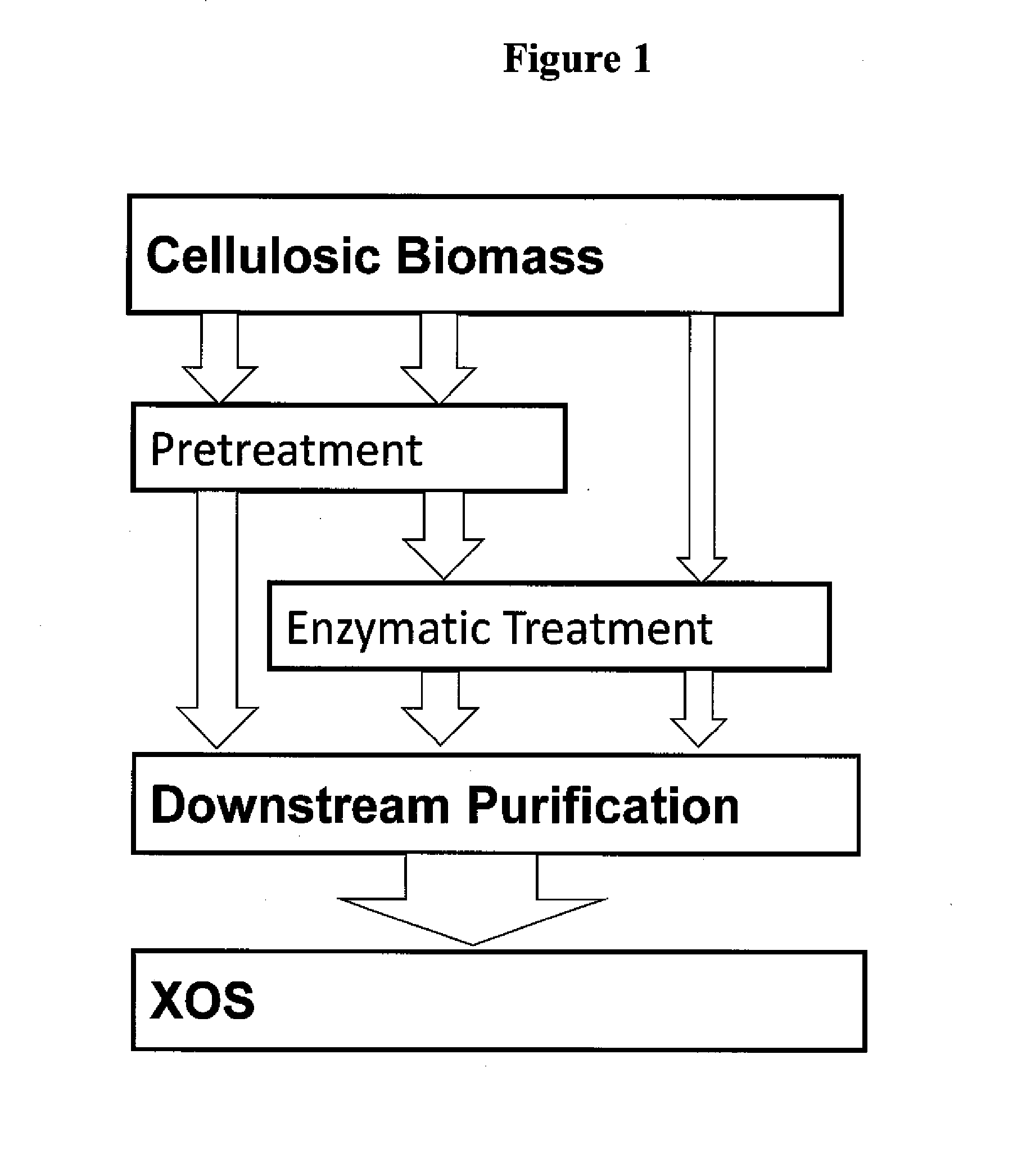Integrated biorefinery
a biorefinery and biorefinery technology, applied in biofuels, waste based fuels, fuels, etc., can solve the problems of inability to continue to use first-generation feedstock in biofuel production and renewable chemical feedstock, high cost of biological fermentative process, and inability to achieve the effects of low molecular weight of hemicellulose, effective and economical recovery of both xylose monomers, and easy removal
- Summary
- Abstract
- Description
- Claims
- Application Information
AI Technical Summary
Benefits of technology
Problems solved by technology
Method used
Image
Examples
example 1
Composition of Corn Cob Materials
[0072]Two different types of corn cobs namely Corn Cob 814 and Corn Cob 1014 used in the present invention (Grit-O'Cobs 2040) were obtained from Andersons, Inc. (Maumee, Ohio 43537, USA) and their chemical composition as presented in the Table 1 was determined using appropriate experimental protocols provide in the section above. On an average, the corn cobs used in the present invention for the recovery of economically-valuable xylooligosaccharides contained about 30% of xylans on a dry weight basis.
example 2
Recovery of Xylooligosaccharides Form Corn Cob
[0073]Corn cob grits were subjected to mechanical milling to obtain particles of appropriate size. The objective of particle reduction was to get a suitable particle size so that there is no dust explosion in the plant and the solid / liquid separation is achieved without much difficulty.
[0074]After appropriate size reduction, the corn cob grit was impregnated with dilute sulfuric acid (0.1%, i.e. 1 g / L) either at 60° C. overnight (12 h) or at 100° C. for shorter duration of 45 minutes to 90 minutes in a steaming impregnator. The impregnation experiments were done in batches. In each impregnation experiments, 1 kg of size-reduced corn cob was mixed with 9 liters of 0.1% sulfuric acid and incubated at specified temperatures for specified time. At the end of the impregnation the slurry was tested for the release of sugars, ions, HMF, furfural and lignin. The lignin release was monitored by measuring the absorbance of the aqueous phase of the...
example 3
Downstream Processing of the XOS Recovered after Pretreatment and Enzyme Digestion
[0080]After enzyme treatment, the resulting slurry was subjected to a series of downstream processing steps to recover XOS in a concentrated form with a reduced amount of xylose and other monomeric sugars. In the first of this lengthy downstream processing, the slurry resulting from enzyme digestion was pressed through a cheese cloth to remove remaining corn cob grits. The filtrate from this initial coarse filtration was subjected to filtration in a hydraulic press. The output stream from hydraulic press was fed into a filter press to remove fines using about 5 micron filter pads. The output from the filter press was fed into a Millipor microfiltration unit with a 0.22 μm Pellicon cassette. The output stream from microfiltration unit was fed into a Millipore ultrafiltration unit with a10kD Pellicon cassettes having a filtration area of 1 square meter. Table 8 provide the details about the mass of the c...
PUM
| Property | Measurement | Unit |
|---|---|---|
| pH | aaaaa | aaaaa |
| degree of polymerization | aaaaa | aaaaa |
| degree of polymerization | aaaaa | aaaaa |
Abstract
Description
Claims
Application Information
 Login to View More
Login to View More - R&D
- Intellectual Property
- Life Sciences
- Materials
- Tech Scout
- Unparalleled Data Quality
- Higher Quality Content
- 60% Fewer Hallucinations
Browse by: Latest US Patents, China's latest patents, Technical Efficacy Thesaurus, Application Domain, Technology Topic, Popular Technical Reports.
© 2025 PatSnap. All rights reserved.Legal|Privacy policy|Modern Slavery Act Transparency Statement|Sitemap|About US| Contact US: help@patsnap.com



